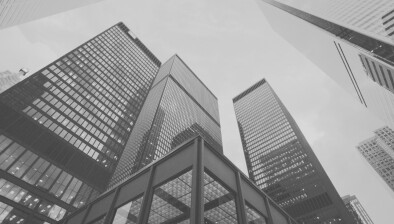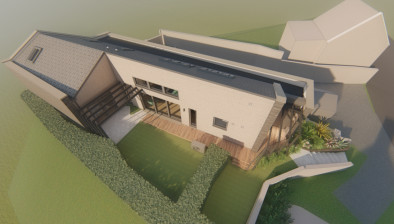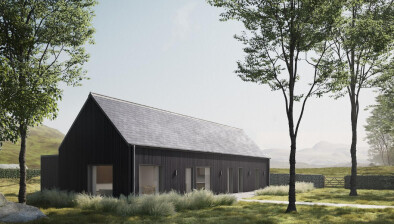Architects’ Showcase: Fife Architects drives A-rated retrofit of coastal bungalow with digital design
Image credit: Katie Pryde
In the coastal town of Anstruther, a 1960s bungalow has been retrofitted to blend modern architecture with the tranquillity of its coastal surroundings.
Using digital tools, Fife Architects capitalised on the available scenery while simultaneously designing a whole house renovation and extension, prioritising energy efficiency.
Design clarity through digital modelling
The original brief was to create a spacious open plan kitchen, with dining and living areas opening onto the rear garden. This layout creates larger functioning social areas while maintaining a subtle delineation of the various spaces.
Image credit: Katie Pryde
Fife Architects used Archicad throughout the project, creating and visualising complex profiles and detailed buildups.
“Archicad was invaluable for us in the design process,” explained Fermín Beltrán Dos Santos, partner at Fife Architects. “It allowed us to showcase intricate architectural details with precision. This helped us communicate our design intent effectively to contractors and ensured accuracy during construction.”
Fermín utilised Archicad’s integration with BIMx to streamline collaboration and communication with the client, contractors and suppliers throughout the project.
Image credit: Katie Pryde
“Sharing the 3D models with the contractors minimised the risk of misunderstandings and errors, and fostered collaboration,” continued Fermín.
“I was also able to show the client the 3D model so that they could visualise the designs. They wanted a sea view in every room and wanted the rooms to be open plan so that they could hang large pieces of artwork on the walls. They would not have been able to see how it would have worked without seeing the model.”
Improving energy efficiency
Sustainability was considered throughout the project. From the start, Fermín was dedicated to refurbishing the building, as opposed to demolishing and rebuilding. As well as it’s modern design, the building now boasts an impressive A-rated energy performance certificate (EPC), a substantial improvement on its previous D-rating.
Image credit: Katie Pryde
From high-performance insulation materials to advanced glazing solutions, every element was selected to minimise heat loss.
This level of insulation and energy efficiency meant a comprehensive heating strategy had to be developed to ensure the building didn’t overheat. This strategy included integrating a full solar photovoltaic (PV) system and air source heat pump into the building to minimise environmental impact and maximise thermal comfort.
Fife Architects has a strong interest in sustainable building, so they chose to use data to support their strategic decisions. They used Archicad’s energy evaluation tool to perform dynamic building energy calculations.
Image credit: Katie Pryde
“By analysing various energy-efficient connections, details, and glazing configurations, I could optimise the designs for maximum energy efficiency, which in turn reduces the environmental impact of our projects,” Fermín commented.
As the building is south-facing, Fife Architects used Archicad to map the path of the sun to ensure each room would receive enough sunlight. Fermín found the rear was gaining too much sunlight, overheating the room. Using this information, he was able to create an overhang to the rear to provide shading.
This strategic approach went one step further and helped highlight that underfloor heating wasn’t necessary upstairs, saving significant time and costs. With this additional budget, the client was able to install battery storage, further lowering their energy bill.
Image credit: Katie Pryde
Future-proofed design
The architects redesigned the house to consider the client’s needs over the long term. The design strategy promotes independence and autonomy among older adults. Features such as wide external steps, wide doorways and lever-style door handles future-proof the home as the occupant ages.
“By remaining in familiar surroundings, individuals can maintain a sense of control over their lives and preserve their routine and social connections. This leads to improved mental well-being and a higher quality of life,” said Fermín.
“This project is something I’m really proud of, not just because of the way it looks, but also because of how it performs in terms of energy.”
By choosing to refurbish rather than rebuild, Fife Architects helped preserve the character of the original structure while dramatically improving its performance. Achieving an A-rated EPC from a D shows what’s possible with the right approach and the right tools.










